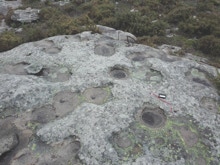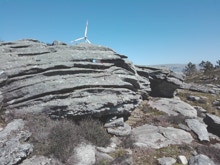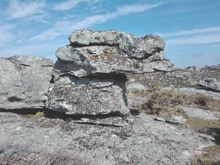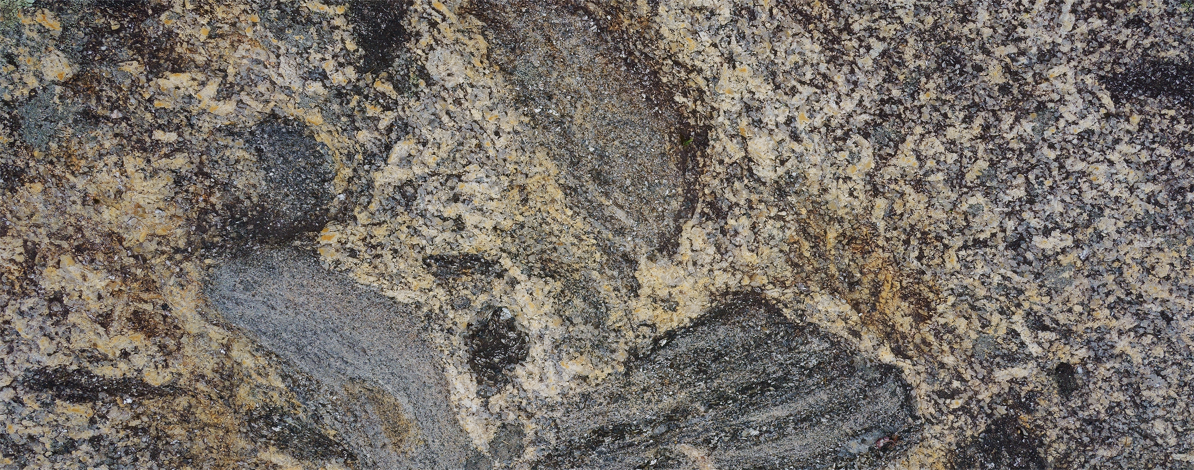

Granite is an igneous (or magmatic) rock that forms when magma slowly cools and crystallizes between 3 and 10 kilometers deep.
The most common minerals in granite are quartz, feldspar (ortoclase, plagioclase) and mica (biotite and moscovite).
In this LNM there are two types of granite, which correspond to two different episodes of magma rising.

Enclaves
They are the remains
of pre-existing rocks that became embedded in magmas that originated the granites.
Veins
It is also possible to see veins of other rocks and minerals that cross the granites. These veins were formed after the granites.


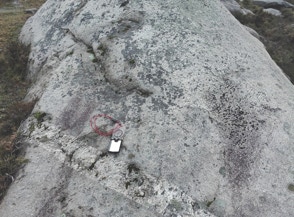
300 million years ago
Granites in Santa Luzia Plateau and surroundings formed about 300 million years ago when tectonic plates collided.

Today
Since then, rocks that were on top of granites were eroded and these slowly became visible at the surface.
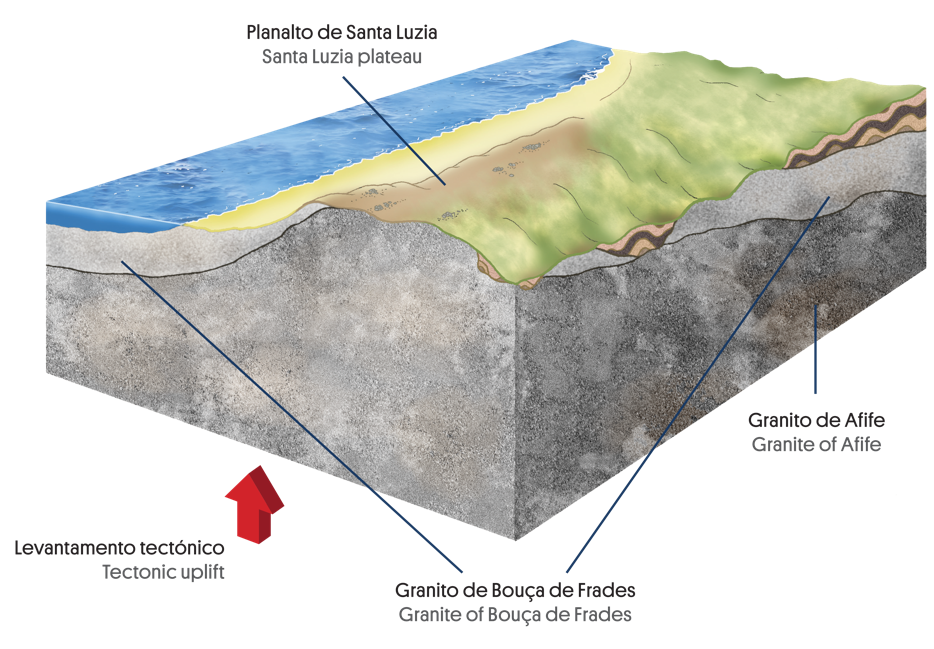

Weird granite landforms
Weathering
Weathering is the set of physical and chemical processes that affect rocks when they are under the action of water, air, temperature variation, and living beings. As a consequence, the minerals, colour and cohesion of rocks change. In granites, weathering is crucial to the development of landforms that might present different shapes and sizes. In this Local Natural Monument, small landforms stand out.
Pias
Pias are small cavities in flat or slightly leaning surfaces of granitic blocks. Their origin is related to chemical weathering due to the extended action of rainwater trapped on the surface of granite blocks.
Tafoni
Tafoni is a Sicilian word which designates cavities and caverns in the walls and lower surfaces of granite blocks. Their occurrence is rare and intriguing but is usually considered to be related to chemical weathering.
Pseudobedding
Pseudobedding is the name given to the appearance of some granites with fractures parallel to the topographic surface, ressembling layers in sedimentary rocks. These fractures were the result of pressure release due to the erosion of rocks that overlapped the granites in the past.
Pedestal rocks
Some granite blocks may be more prominent in the top than in the base thus being called pedestal rocks. In this Natural Local Monument, these landforms are related to more intense weathering and erosion in the lower part of pseudobedded blocks.
